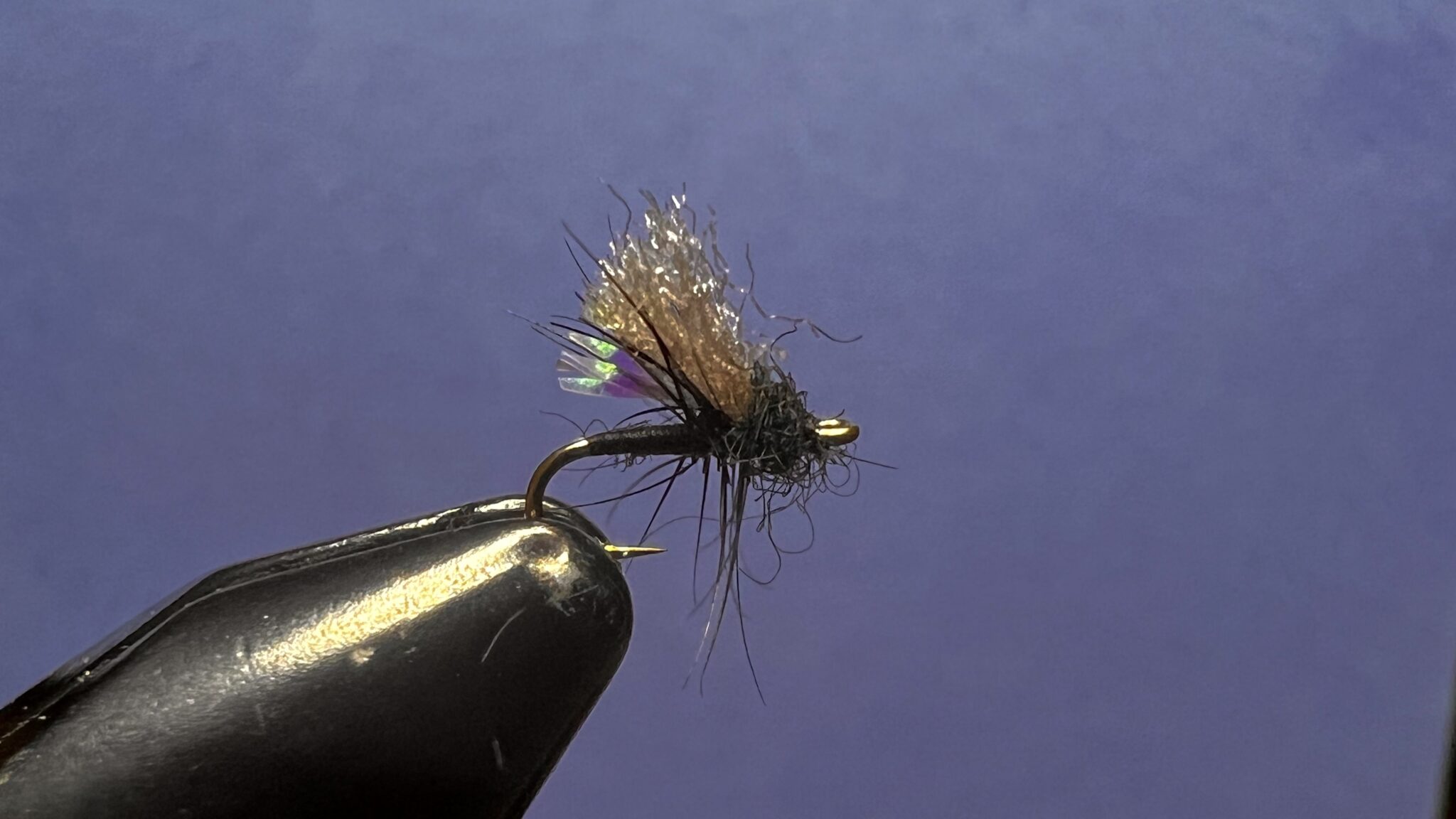
Each season carries with it a certain type of fishing that marks the passing of the year as predictably as a fine timepiece.
Winter is “midge o’clock” on Mother Nature’s clock, with chironomids being a reliable food source for trout while the hatches of summer go into their hibernation.
Mayflies, stoneflies, and caddis are still there, in nymphal form, lurking beneath the surface and plotting their comeback in the warmer months. But they simply cannot tolerate the colder air temperatures of winter–which is why you don’t see suplhur hatches on Christmas. They’re called “mayflies” for a reason.
But midges can. And since they’re not only the most abundant insect any time of year, and actively hatch despite colder ambient temperatures, you can imagine why they’d be be of crucial importance to both fish and fisher.
For us, it means a unique opportunity to catch fish on the surface!
Some people don’t believe me when I tell them how many fish I catch on dry flies in the winter. But here in Colorado, I see fish rising all winter long and while the seasonal, fair weather fishermen are staying warm at home, I’m catching fish on dry flies. In February.
It’s true winter can be a spectacular time to fish (and without the crowds).
The Challenges of Midge Fishing
Unfortunately, most people are intimidated by midge fishing. For one thing, the flies are minuscule, which not only makes them difficult to see on the water, but also tricky to tie on!
Once you get down to size #20 and below, that hook eye looks like a sub-atomic particle and your tippet looks like a rope.
There’s nothing more frustrating than struggling to thread your tippet while the fish are rising right in front of you, hoping you get it all knotted up before they shut down or get spooked.
On top of that, such small flies typically do not float very well and are not durable.
Some midge patterns incorporate CDC. They work great for ultra-selective fish in slow water; however, their buoyancy is tenuous at best and you have to switch flies to dry them out after every fish, wasting precious fishing time.
In fact, many dry midge patterns do not float very well at all. This is because their diminutive size just doesn’t offer enough real estate for the tyer to put a sufficient amount of materials on the hook shank to make them buoyant.
For these reasons, many people eschew midge fishing. And I don’t blame them. But it’s regrettable because I think they’re missing out.
Even though I’ve been fishing midges quite a while, these challenges still apply to me. So I wanted to design a midge pattern that was not only effective, but solved some of these challenges, and would make midge fishing more accessible.
After three years of experimentation, I’ve come up with a design that I think any angler with midge-aversion would be comfortable fishing: the “Undercover Midge”.
The Undercover Midge: Design Philosophy
After being fed up with all of the above, I made a checklist of everything I wanted a dry midge pattern to be:
- Float well
- Be easy to see on the water
- Not fall apart after two fish
- Be less of a headache to thread
- Get the trout’s attention without spooking them
- Have the correct disposition on the surface
As mentioned, with mere millimeters to work with, there’s not a lot of room for many materials. So I had to experiment with many different ones to figure how how I could meet all these requirements with just a handful of ingredients. After a lot of trial and error, I’ve settled on the following.
Thread Body
I have to use thread anyway, so why not make it multi-use? That reduces the number of ingredients required, plus, the body needs to be ultra-thin, so thread is the perfect choice.
Polypropylene Yarn
This actually checks off a few of the requirements. I use a relatively thick clump which makes the fly float extremely well, and the dun color is highly visible–almost like a miniature strike indicator. It’s extremely durable, unlike CDC and doesn’t require you to switch out flies to let them dry in between fish.
#20 Straight-Eye Hook
Everyone hates tying midges on and I always wonder why more people don’t use straight-eye hooks. They’re much easier to thread since the hook eye has total clearance from the materials at the head. I chose #20 only because that’s the practical size limit of the materials. If I tied them smaller, I’d have to modify the materials list. So far, I haven’t found the need to do it. If I need a #22 or #24, I’ll just tie on a Krystal Flash Emerger. Side note: the Daiichi 1110 actually has a 1x gap, which helps reduce another complaint among midge fishers: missing fish at the hookset.
Krystal Flash Underwing
From below, the Krystal Flash forms a subtle sparkle beneath the polypropylene yarn which is just enough to catch the fish’s attention, without spooking them. This is especially beneficial during a heavy hatch when the fish might have difficulty picking out your fly from the naturals.
Clipped Hackle
If you look at an adult midge, their legs are actually quite long! I use 3-4 turns of oversized hackle to suggest these, then clip it on the bottom so the entire fly rides flat on the surface. The “legs” then stick out perpendicular from the body just like the actual insect.
Scraggly Dubbing
I originally used superfine dubbing for the head, but it just didn’t look “buggy” to me. The more scraggly dubbing at the head further suggests legs, and also helps with buoyancy since it absorbs floatant, and on the micro level, anything you have on the fly that’s lighter than water and grabbing the surface tension helps it float.
This is the current selection of materials, but that might change. Let’s just say it’s the best I’ve come up with so far. As Archibald MacLeish said: “A novel is never finished; only abandoned.” The same is true of one’s fly patterns
The Undercover Midge Recipe
By Jason Klass
Tying note: I only tie these in gray and black, since those are the two most common colors of midges. I feel there’s no need to tie any other colors, since in that size, the nuance of color is barely discernible by the trout. Really, you just need a dark pattern and a light pattern.
Gray Version
Hook: #20 TMC 1110
Thread: 8/0 thread or thinner, light gray or dun
Body: Thread
Hackle: 4 turns of light dun hackle, two sizes larger than hook size, trimmed on bottom
Underwing: 3-4 strands of pearl Krystal Flash
Wing: Lt. dun floating poly yarn, clipped to body length
Head: Gray dubbing of your choice. I like a scraggly, spiky gray dubbing such as vicuna, hare’s ear, etc.. For a neater head, use Superfine dry fly dubbing or similar.

Black Version
Hook: #20 TMC 1100
Thread: 8/0 thread or thinner, black
Body: Thread
Hackle: 4 turns of black, one size larger than hook tied in the middle of the hook and clipped on the bottom
Underwing: 4 strands of pearl Krystal Flash
Wing: Lt. dun floating poly yarn, clipped to body length
Head: Black dubbing of your choice. I like a scraggly, spiky gray dubbing such as vicuna, hare’s ear, etc.. For a neater head, use Superfine dry fly dubbing or similar.
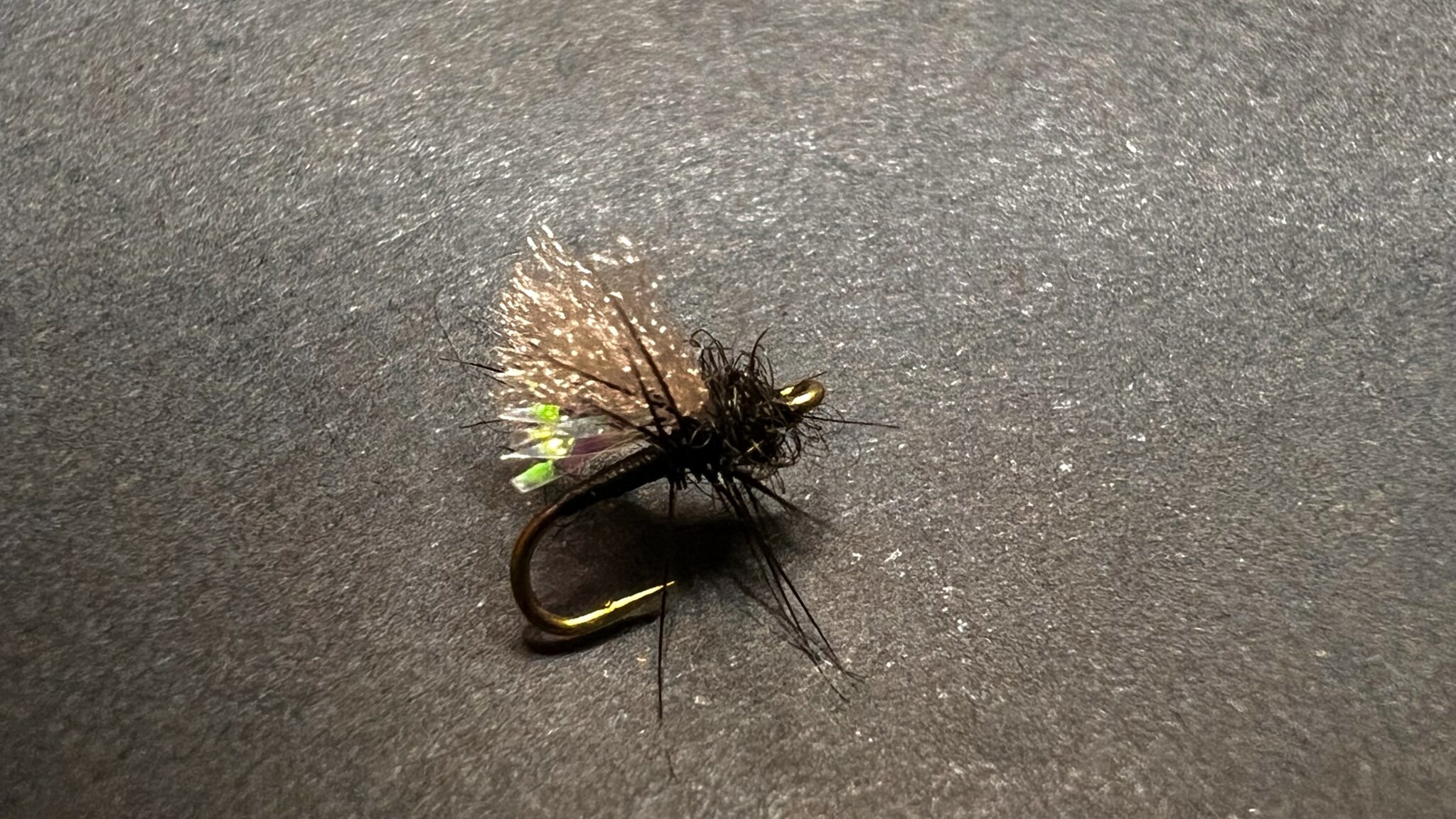
How to Tie the Undercover Midge
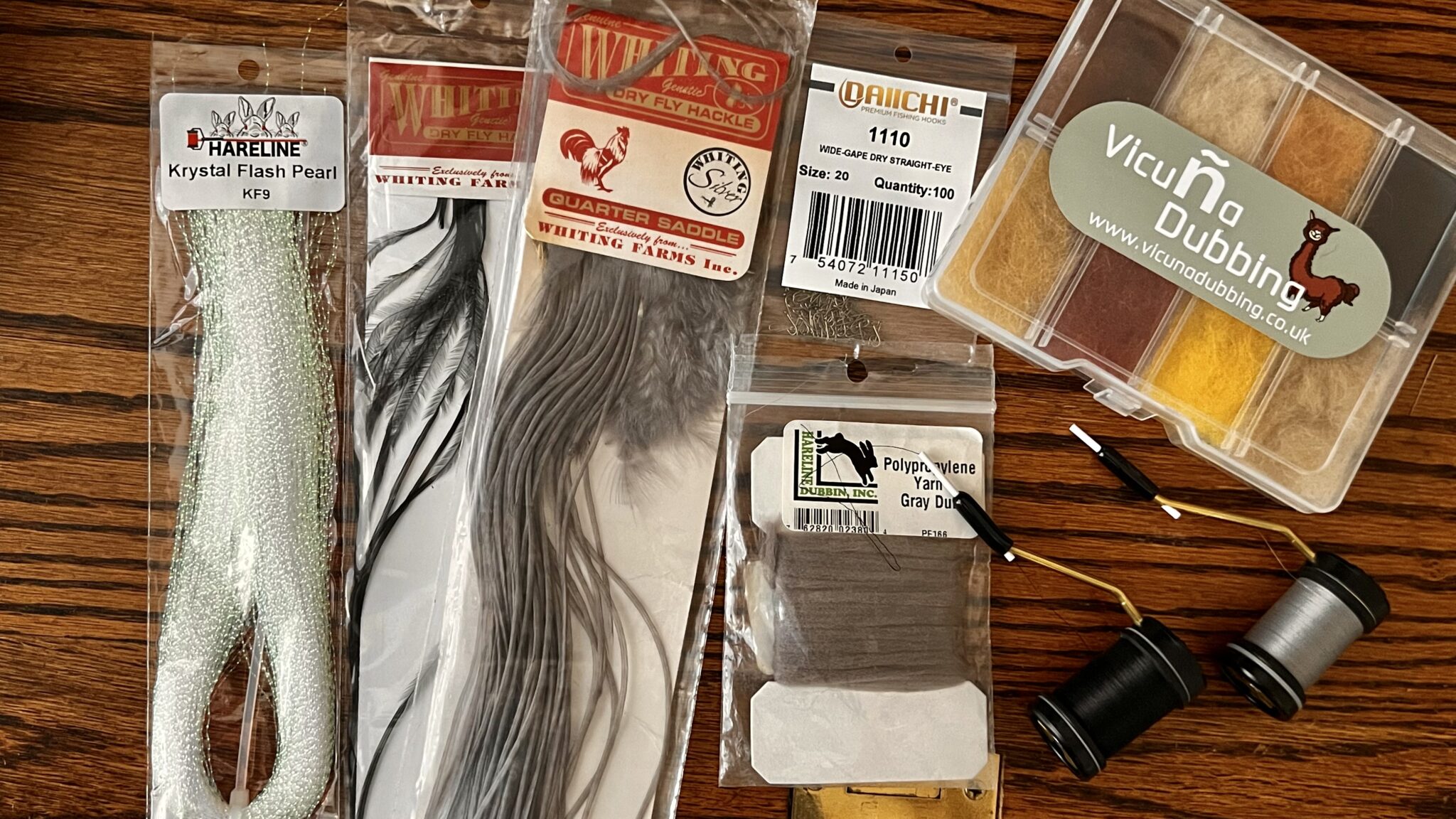
Here’s the step-by step, but first, I want to reiterate the benefit of the straight eye. Wouldn’t you rather thread your tippet through this eye than the typical standard down-eye hook?
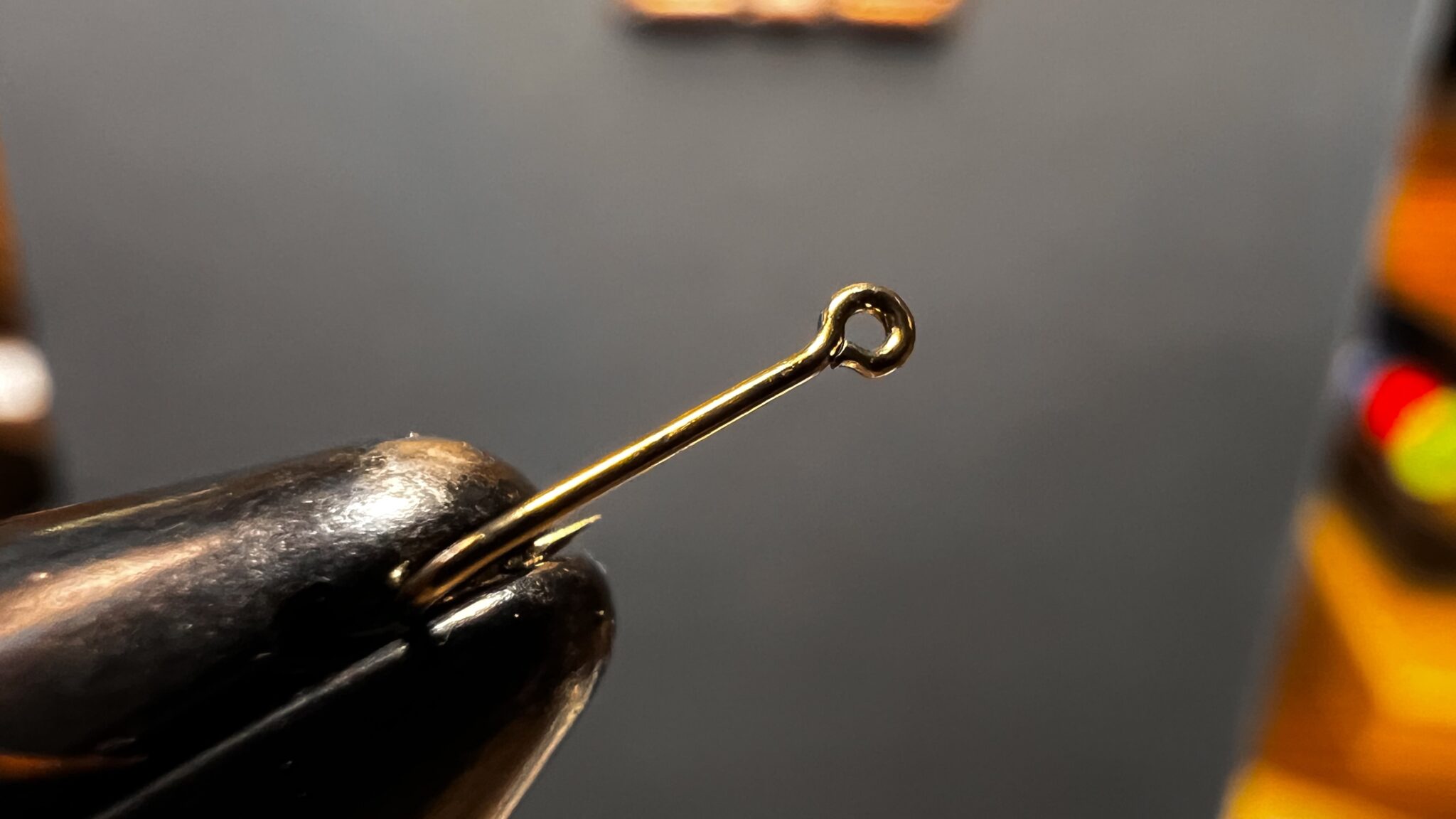
Let’s tie a gray one!
1. Start the thread and build a body of thread 50% of the hook shank length (back and forth twice).
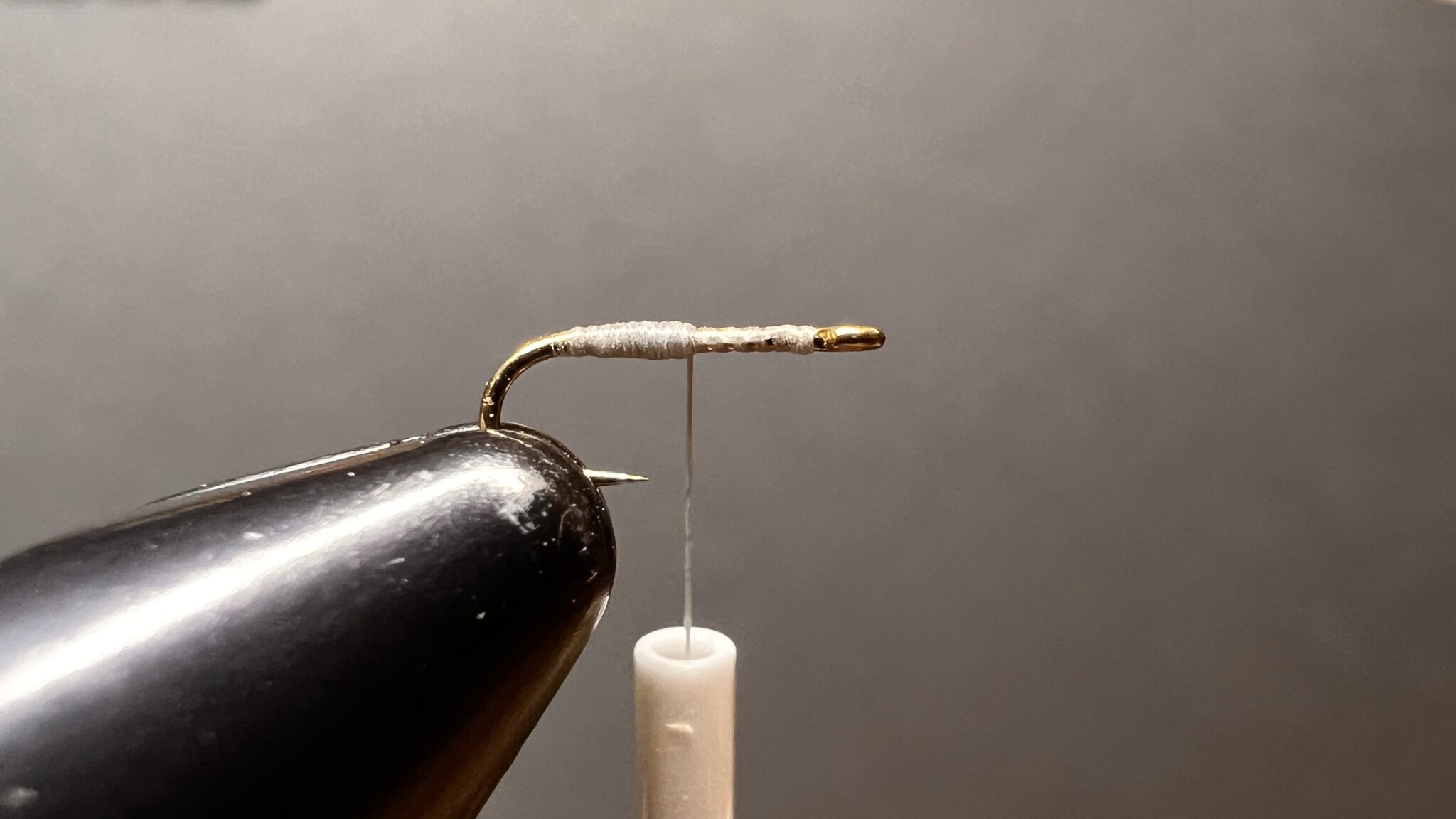
2. Make 4 wraps of hackle at the midway point.
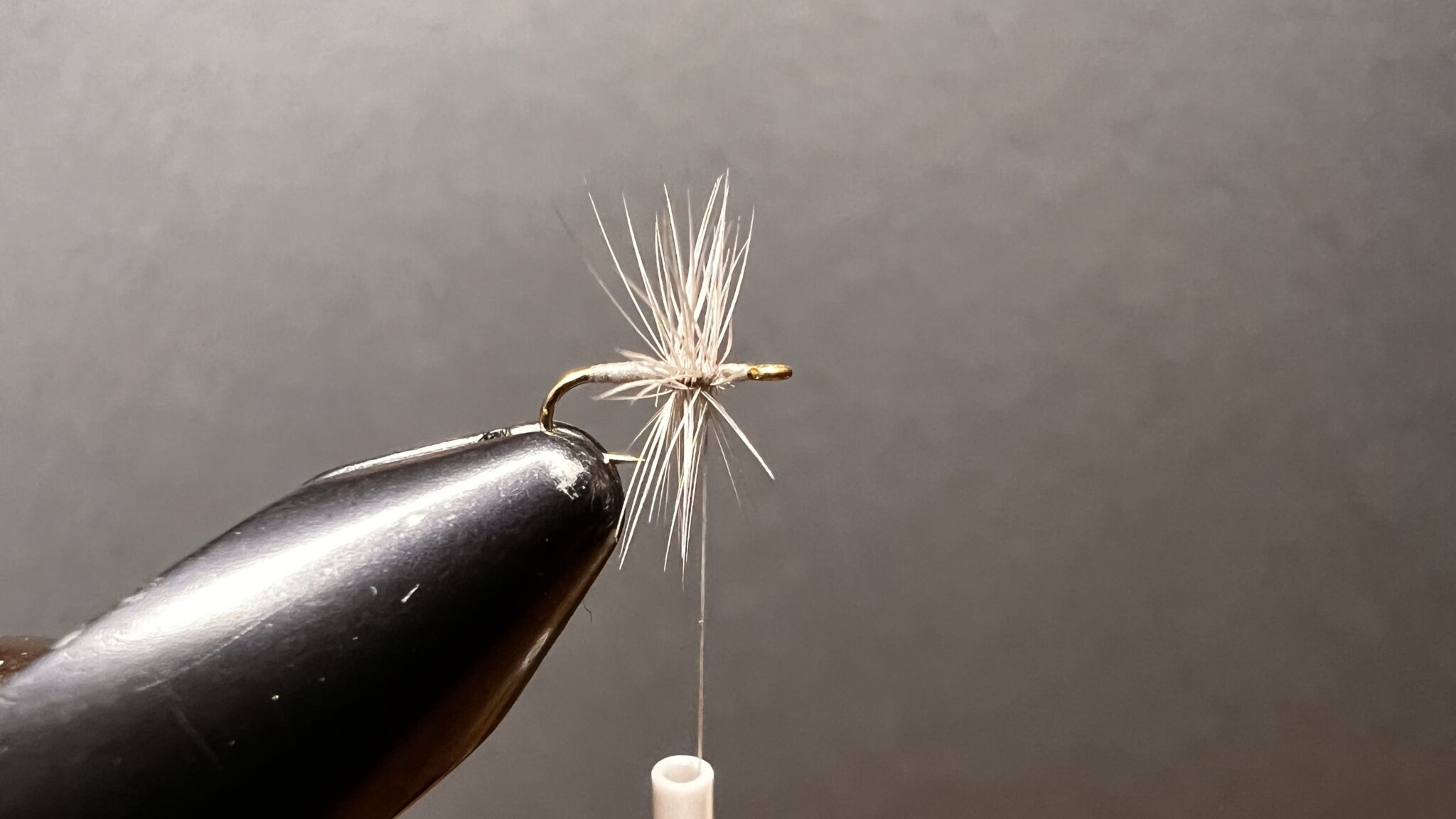
3. Trim the bottom hackle.
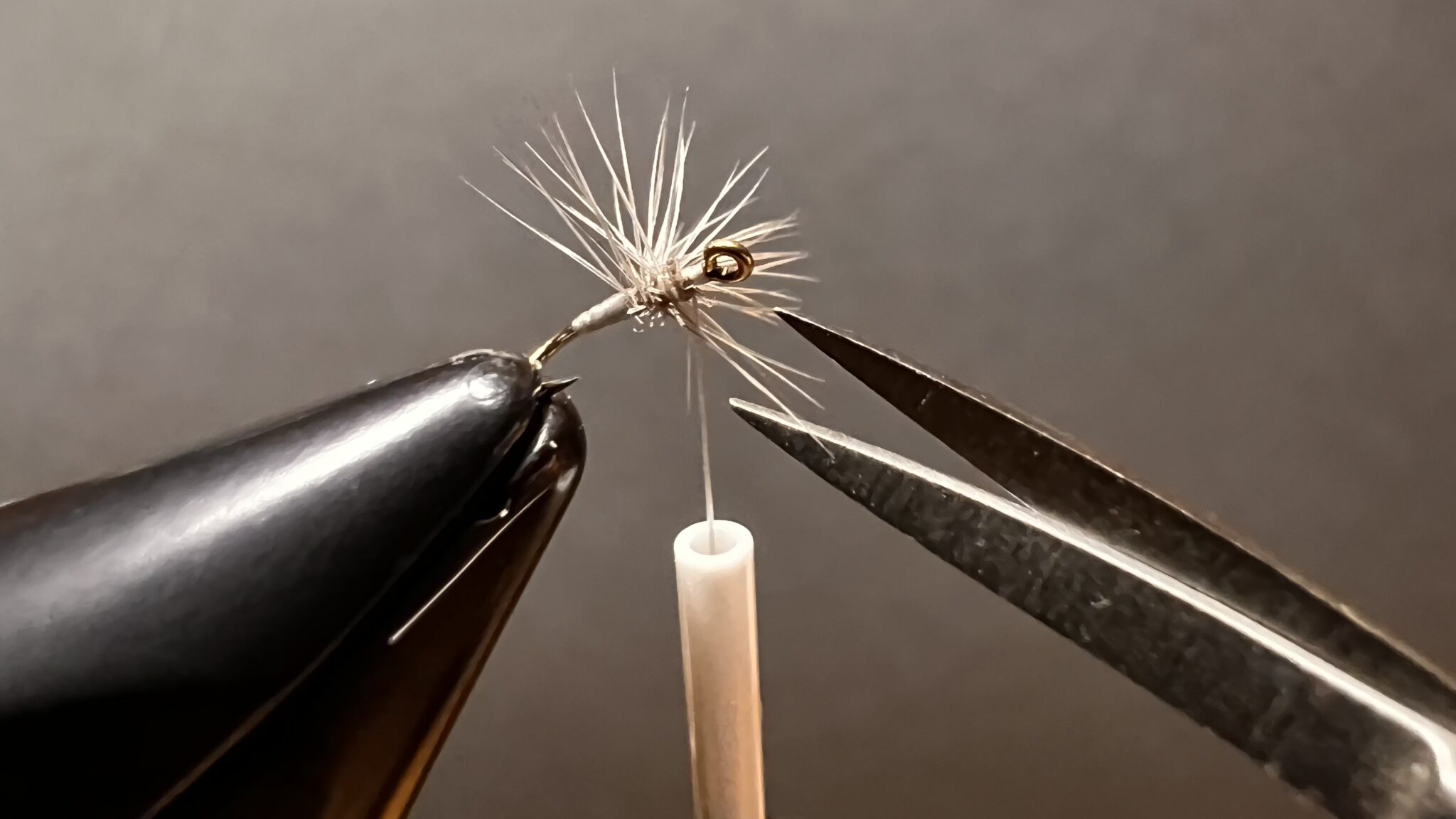
4. Tie in 4 strands of Krystal Flash for the underwing.

5. Tie in a generous clump of the polypropylene yarn over the Krystal Flash. The thicker the wing, the better the fly will float.
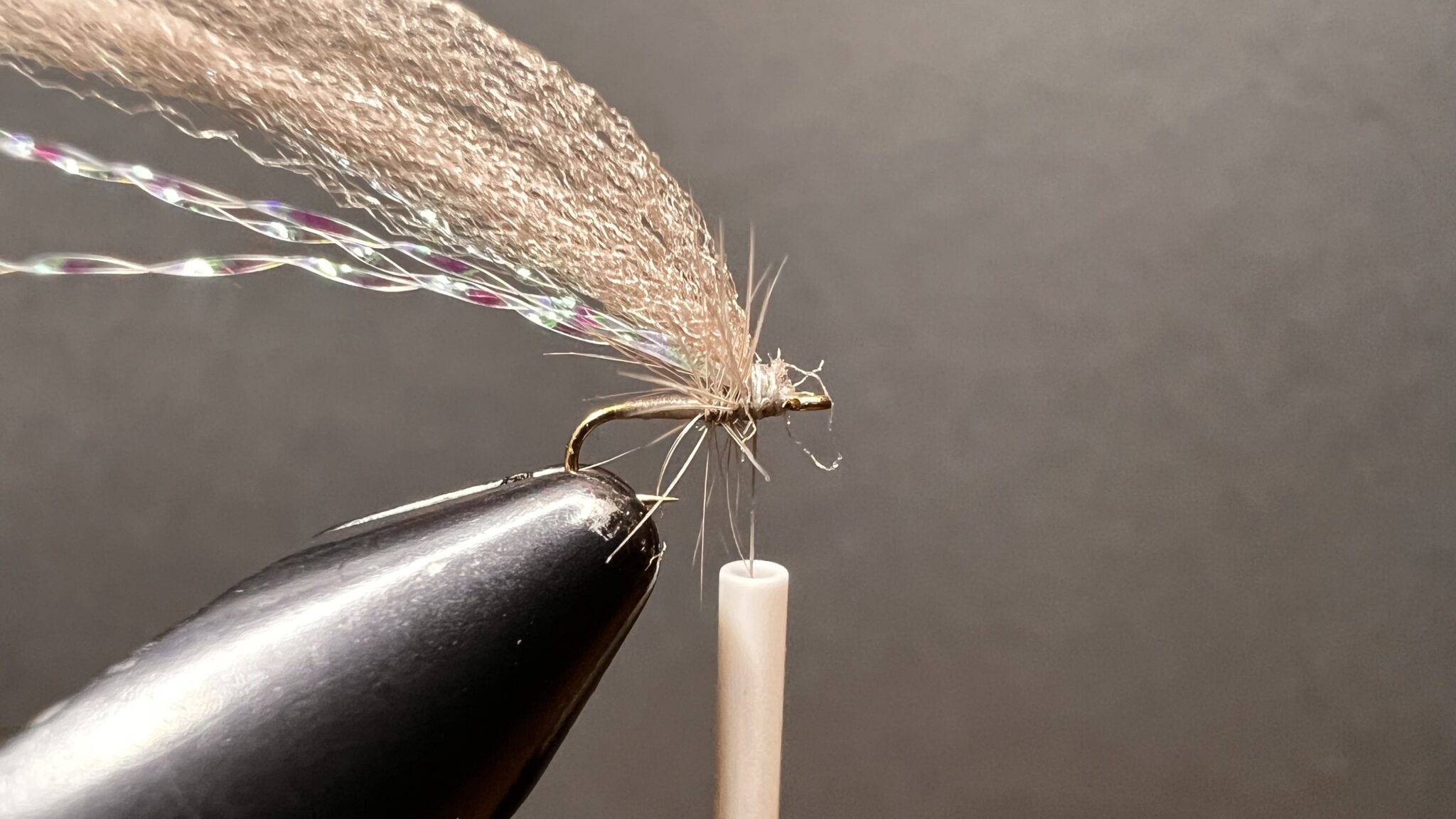
6. Dub the head and whip finish.
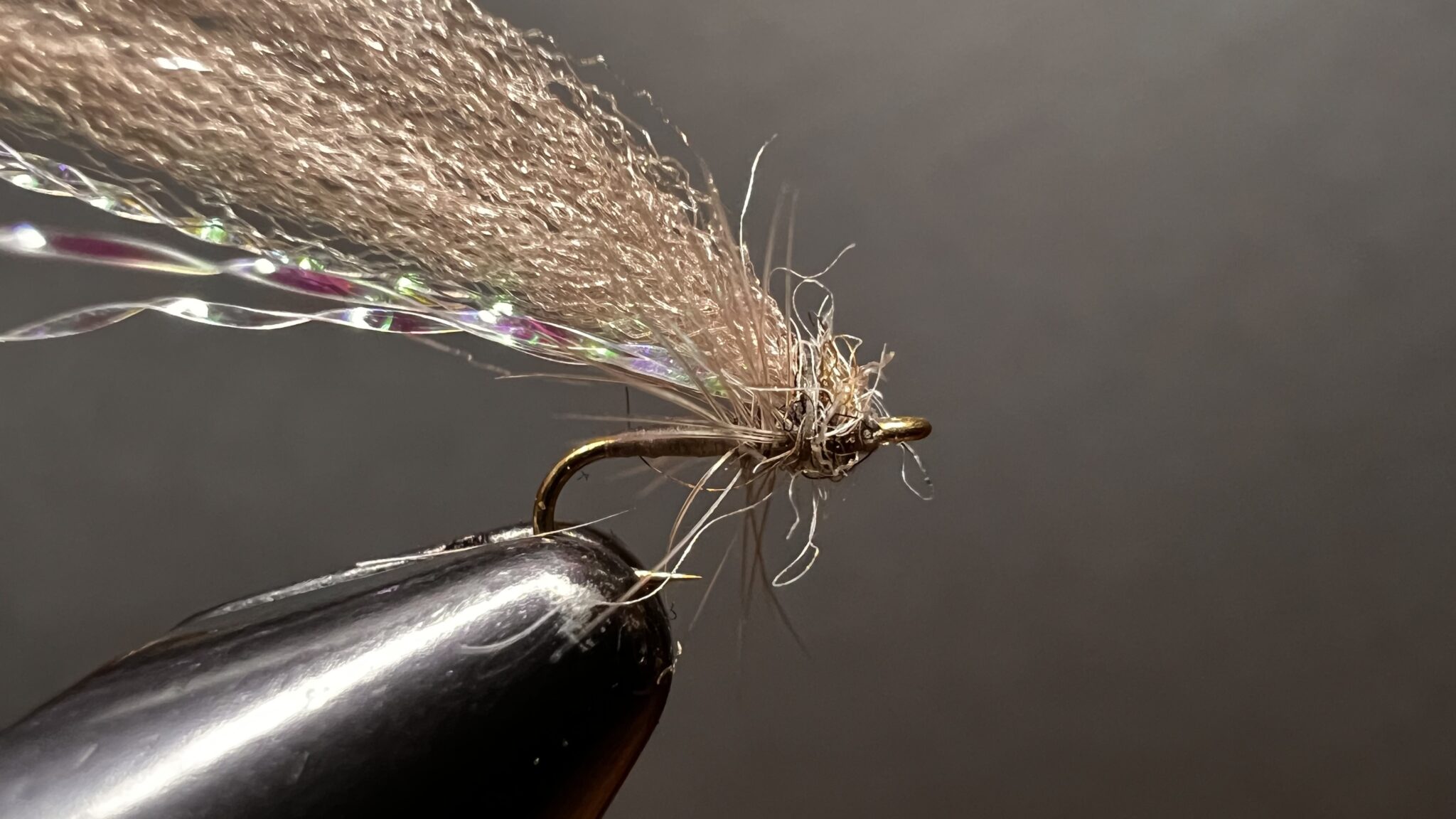
7. Trim the wing to the length of the thread body and you’re done!
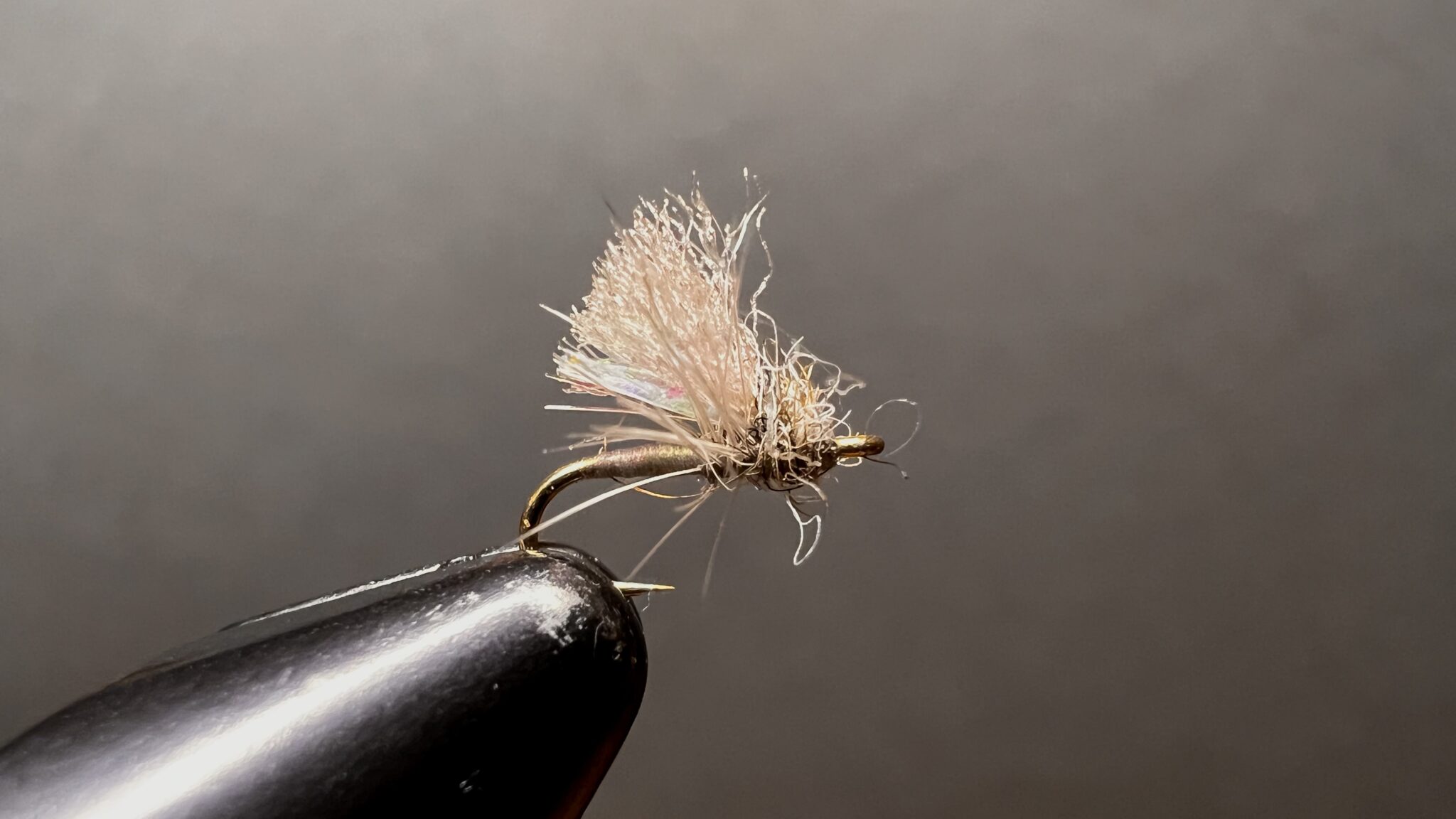
(Bottom view)

Make sure the hackle is clipped completely off on the bottom so that the hackle only sticks out from the sides. You want the fly to sit flat on the surface of the water.

How to fish the Undercover Midge
The ideal situation is that you’re on a big, slow pool where you’re seeing fish actively rising. I find that this fly works best with a 6.5x or 7x tippet, fished in a dead-drift cross-stream or down-stream presentation. I definitely recommend using gel floatant, and making sure you work it into the wing well (use VERY little as too much can actually make the fly sink).
On bigger pools, fish will often hang at the very tail, right before a riffle or waterfall. How many times have you been fishing upstream, only to hear a fish rise behind you? In these cases, a downstream dead drift with the Undercover Midge is almost guaranteed to catch fish!
The main thing is to make sure your drift has absolutely zero drag. Again, remember that at the mirco level, everything is magnified so a half-millimeter movement might as well be 10 feet. That’s why I recommend the lighter tippet. You could get away with 6x, but I’ve actually noticed an improved catch rate with 7x.
Luckily for us, tenkra happens to be a great tool for avoiding drag from microcurrents and thus is an excellent tool for midge fishing!
While midge fishing causes trepidation for some people, this fly actually makes me look forward to it, because I know I can see it, I won’t be spouting expletives while tying it on, I know I’ll stay in the game as much as possible (because I won’t have to switch flies so much), and the takes are exhilarating!
And I’ll admit, I enjoy the “bragging rights” of telling people I’m catching fish on dries when most people think fish can only be caught subsurface in the winter!







